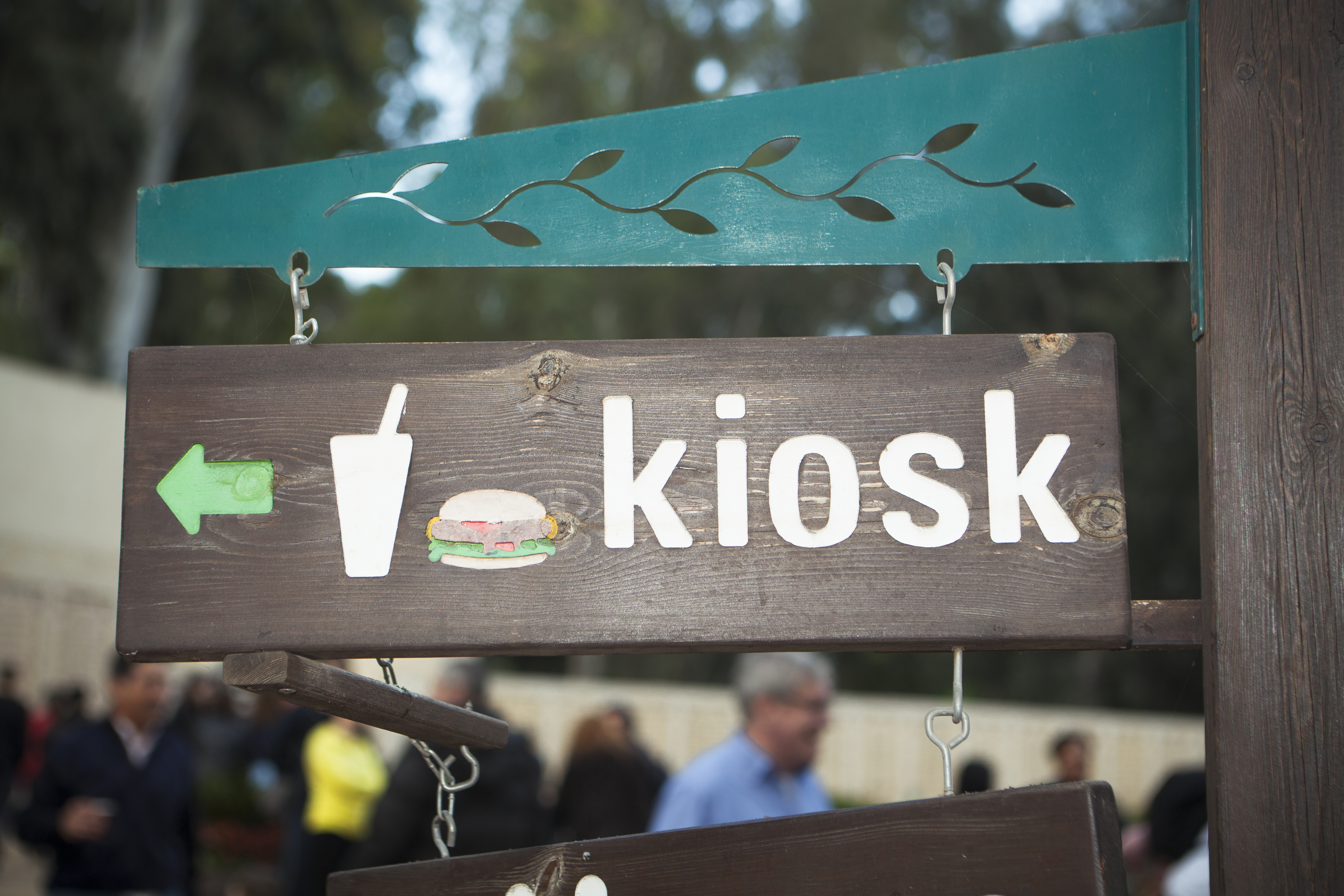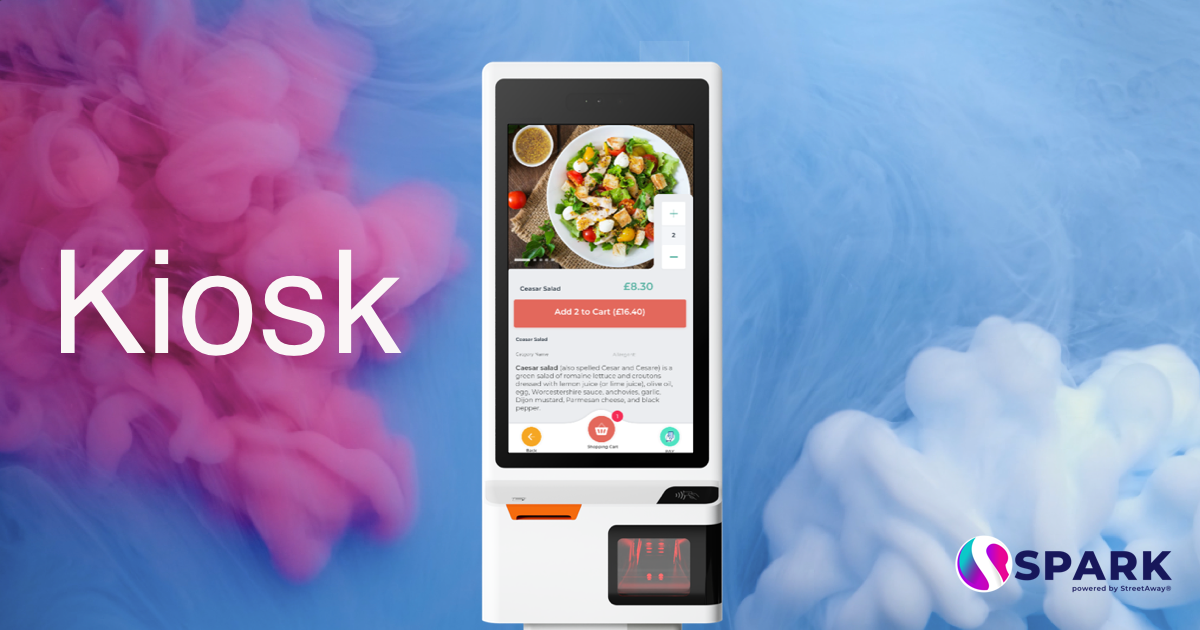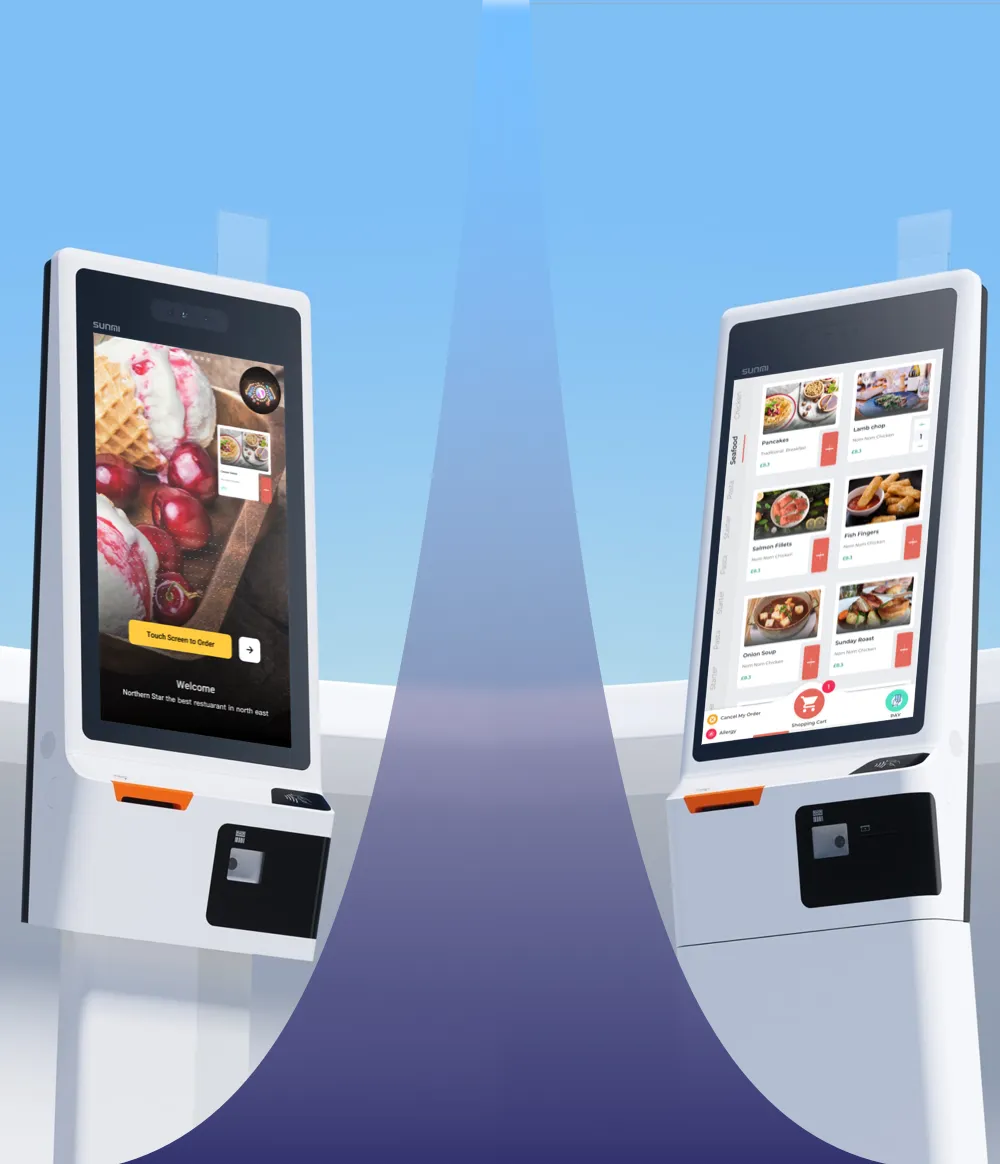In the past few years, self-ordering kiosks have become a staple at fast-food and fast-casual chains around the world. But while fast-food outlets and takeaways such as McDonald’s went all-in on kiosks early on, independent restaurants have been much more hesitant and slow to adopt this kind of self-serve technology.
The COVID-19 pandemic has radically changed the way independent restaurants think about self-ordering kiosks. What was once seen as costly and impersonal technology, is now considered a cost-effective way to reduce face-to-face contact and keep guests safe.
What is a Smart Self-service Kiosk?
A smart self-ordering kiosk gives guests the power to order and pay by themselves which is revolutionising the self-ordering market by bringing automation and a great display to hospitality businesses enhancing user experience.
These systems usually consist of a touchscreen, equipped with an easy-to-use digital interface. This screen will display the restaurant’s menu and guide customers through the ordering process, from building their meal to payment, and pickup. As the customer builds their order, the kiosk can also display prompts with different promotions or menu modifiers that guests might have not known about before ordering.

What are the benefits of using Kiosks?
- Increase sales
With a self-ordering kiosk, there’s an option to push targeted and intuitive upsell prompts as guests are building their orders. This can include special promotions such as 2-for-1 deals, but it can also include strategic upselling such as adding extra paid toppings, upgrading to premium sides, or making a meal a combo.
Hospitality businesses will be pleasantly surprised when checking POS reports to see the effect these little add-ons have. Just take it from Taco Bell, which made 20% more money on digital orders than those taken by human cashiers.
McDonald’s found that customers spent about one dollar more per order when using a kiosk, resulting in a 30% increase in average sales. McDonald’s also found that 20% of customers who didn’t initially order a drink would buy one when it was offered through the kiosk.
- Decrease waiting times
Another benefit of self-ordering kiosks is that they speed up the ordering process.
Let’s face it, hungry customers hate waiting in lengthy lines, especially during a pandemic when customers may feel anxious about being around others for extended periods of time. In fact, a study by Tillster found that if the line to order from a cashier is longer than 5 people, 75% of customers would choose to order from a self-service kiosk. And if the line is 10 people long? A whopping 91% say they would rather order from a restaurant kiosk.
A self-ordering kiosk can help to decrease waiting times by letting customers build their order, send it to the kitchen, and pay, all in just a few taps. Consumers can then move out of the line to wait until their order is ready before picking it up from a designated counter.

- Customer satisfaction/safety
One of the biggest benefits of self-ordering kiosks is that they can keep customers and staff safe by reducing in-person interactions.
Self-ordering technology like restaurant kiosks provides a natural solution to this dilemma by giving guests the power to order and pay for their meal all by themselves. Whether the kiosk is placed at the front of the restaurant or directly on each table, a kiosk allows a customer to place their order and send them directly to the kitchen without interacting with staff, which also removes customers’ fear of negative judgement, leaving them free to order whatever they want.
Check out our social media for more updates about Kiosks
- Enhanced Order accuracy
With customers selecting and submitting their own orders, the margin of error will significantly decrease. A kiosk with a visual menu is incredibly valuable in reducing miscommunication because it ensures that buyers know exactly what they are ordering, preventing those “This isn’t what I ordered” conversations.
With increased order accuracy, the kitchen won’t be wasting time preparing an unordered item or incorrect dish. In turn, service staff won’t have to contend with angry customer complaints or negative online reviews.

- Reduced labour costs
Self-ordering kiosks also help address the issue of productivity by giving restaurateurs the flexibility to move staff around. Front-of-house staff who would manually take orders can now do other tasks which will increase sales and improve the customer experience. This is especially valuable now during the pandemic because these staff can be redeployed for cleaning duties or directing the flow of foot traffic in restaurants.
This kind of flexible staffing improves productivity, but it can also help reduce labour costs overall. Though self-ordering kiosks can’t replace all restaurant workers, it might mean that restaurants need fewer workers during busy shifts.
SPARK’s Kiosk and How it will benefit your Hospitality businesses?
SPARK’s smart, self-serving kiosk revolutionises the self-ordering market bringing automation and a great display with a modern UI to businesses enhancing user experience! With self-service kiosks, restaurants will be able to offer a different, agile and practical experience to customers. This could be what hospitality businesses need to set them apart from the competition.
What are the benefits of using self-service Kiosks?
- Quick and convenient
A kiosk is user friendly, offers all of the upsells, and will also process payments from customers. - Reducing costs
Kiosks can serve customers, freeing existing staff and resources to be allocated elsewhere. - User experience
Recent surveys suggest that consumer behaviour is shifting, showing a preference for mobile ordering by phone or kiosk, especially amongst the younger generations.




